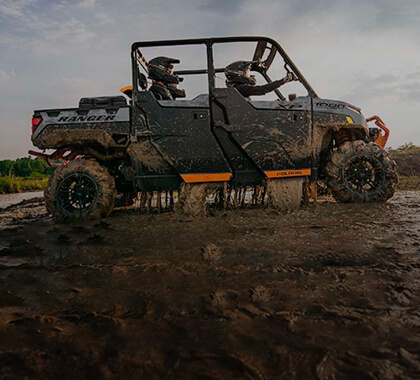If you own a Polaris Ranger Mid-Size, you may encounter air in the coolant lines from time to time. However, it can be difficult to tell if there is air in the lines just by looking. Contrary to what one might think, having a low coolant reservoir does not necessarily mean that air will be introduced into the coolant system. These models are designed to pull coolant into the radiator when the reservoir gets low, and any air that gets in will typically be pushed out. But, if the cooling system doesn't push out the air on its own, you can assist in the process by "burping" the cooling system.
The burping process begins by parking your Ranger on an incline and raising the front end a foot or two with a jack. From here, you will need to take off the radiator cap and let the Ranger run. Be careful of the hot air that may escape as the cooling system starts burping right before the fan comes on. Once the fan has cut on, it's time to add coolant. You may need to repeat this procedure until all of the air is out of the system and the radiator level no longer drops when the fan cuts on.
In addition to getting air into the cooling lines, radiator obstructions can also cause your Polaris Ranger Mid-Size to overheat. Accessories, like winches and light bars, can block airflow to the radiator, causing it to underperform. Additionally, mud and dirt can get caked onto the radiator, which can also impact its effectiveness. Keep these factors in mind when considering aftermarket accessories for your Ranger that may obstruct the radiator.
It's important to keep an eye on the coolant in your Ranger and address any issues promptly. Regular maintenance can help prevent problems before they occur, but if you do encounter air in the coolant or an obstructed radiator, don't hesitate to take action. Burping the cooling system and keeping the radiator clear of obstructions can help keep your Polaris Ranger Mid-Size running smoothly.






